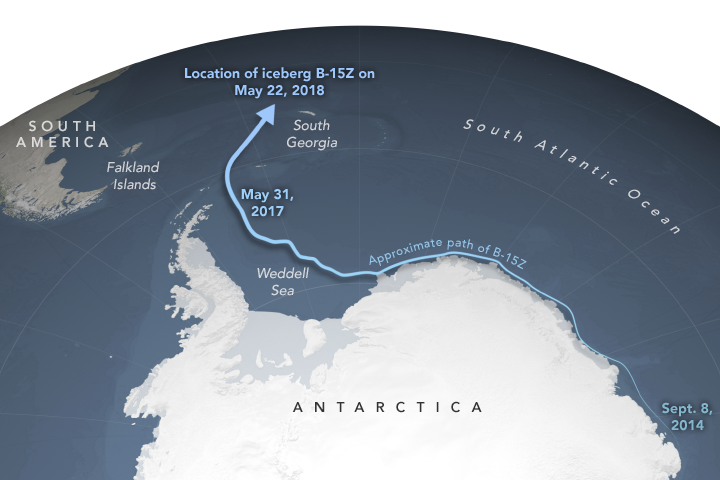Iceberg B-15 on:
[Wikipedia]
[Google]
[Amazon]
Iceberg B-15 was the largest recorded iceberg by area. It measured around , with a surface area of , about the size of the island of

 In the last weeks of March 2000, Iceberg B-15
In the last weeks of March 2000, Iceberg B-15
Jamaica
Jamaica (; ) is an island country situated in the Caribbean Sea. Spanning in area, it is the third-largest island of the Greater Antilles and the Caribbean (after Cuba and Hispaniola). Jamaica lies about south of Cuba, and west of Hispa ...
. Calved from the Ross Ice Shelf
The Ross Ice Shelf is the largest ice shelf of Antarctica (, an area of roughly and about across: about the size of France). It is several hundred metres thick. The nearly vertical ice front to the open sea is more than long, and between h ...
of Antarctica
Antarctica () is Earth's southernmost and least-populated continent. Situated almost entirely south of the Antarctic Circle and surrounded by the Southern Ocean, it contains the geographic South Pole. Antarctica is the fifth-largest cont ...
in March 2000, Iceberg B-15 broke up into smaller icebergs, the largest of which was named Iceberg B-15-A. In 2003, B-15A drifted away from Ross Island into the Ross Sea and headed north, eventually breaking up into several smaller icebergs in October 2005. In 2018, a large piece of the original iceberg was steadily moving northward, located between the Falkland Islands
The Falkland Islands (; es, Islas Malvinas, link=no ) is an archipelago in the South Atlantic Ocean on the Patagonian Shelf. The principal islands are about east of South America's southern Patagonian coast and about from Cape Dubouze ...
and South Georgia Island
South Georgia ( es, Isla San Pedro) is an island in the South Atlantic Ocean that is part of the British Overseas Territory of South Georgia and the South Sandwich Islands. It lies around east of the Falkland Islands. Stretching in the east†...
. As of 2021, the U.S. National Ice Center
The National Ice Center (NIC) is a tri-agency operational center whose mission is to provide worldwide navigational ice analyses for the armed forces of the United States, allied nations, and U.S. government agencies.
It is represented by the U ...
(USNIC) still lists one extant piece of B-15 that meets the minimum threshold for tracking (). This iceberg, B-15ab, measures ; it is currently grounded off the coast of Antarctica in the western sector of the Amery region.
History

 In the last weeks of March 2000, Iceberg B-15
In the last weeks of March 2000, Iceberg B-15 calved
{{Short pages monitor